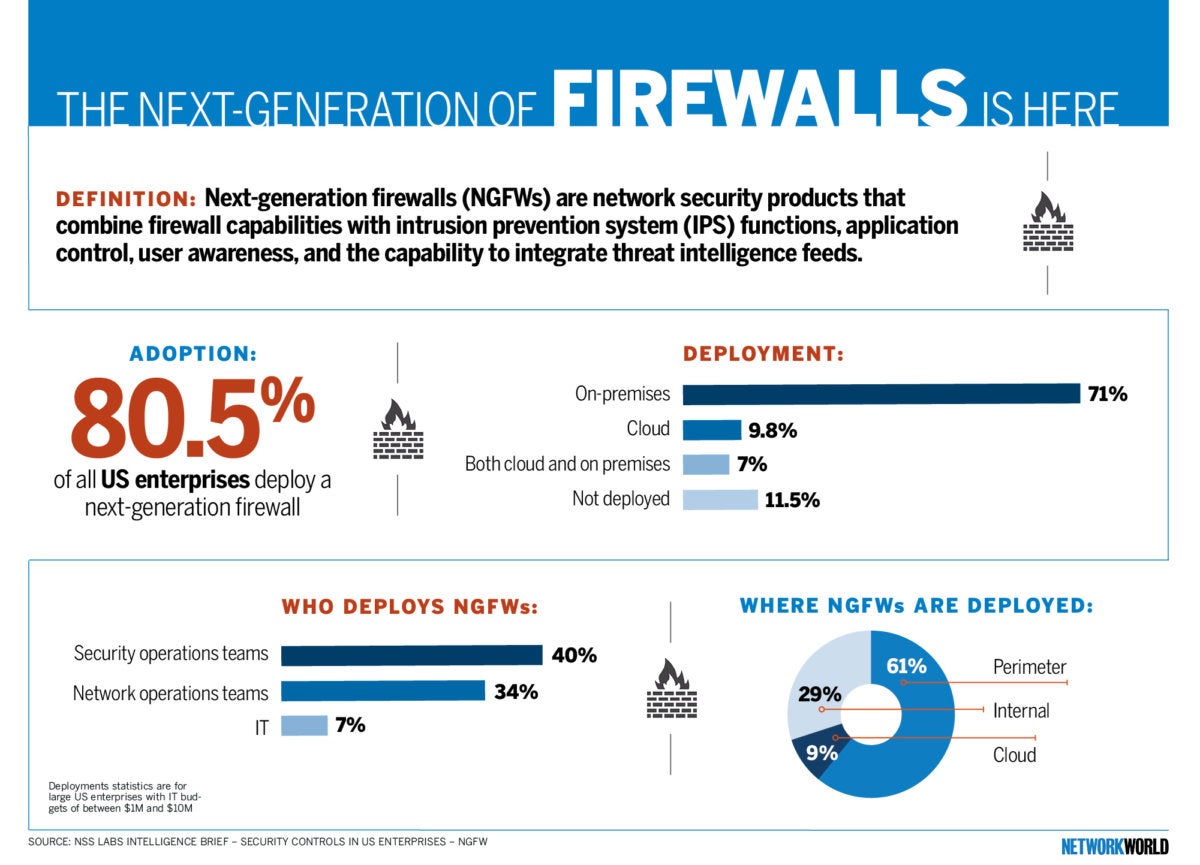Resource TypeDescriptionAt-a-GlanceConsolidate multiple security layers in a single platform, eliminating the cost of buying and managing multiple solutions. This integrated approach combines best-in-class security technology with multilayer protection integrated in a single device that’s less costly than piecemeal security solutions.Case studyLearn how Cisco next-generation firewalls are helping these companies better protect their customers, employees, and brands.CommunityJoin your peers and Cisco experts in the Cisco Firewalls community.
By Sharad SinghThe term of next-generation firewall (NGFW) came out of nowhere a few years ago and now it has become the glue that holds network security together. Firewall–as we know already–is a standard security tool for the major enterprises. The NGFW is a deep-packet inspection firewall that operates beyond protocol inspection and blocking to improve application-level inspection and brings intelligence from outside the firewall. These devices combine the conventional L3/L4 packet filtering with deep packet inspection, IPS, and other network security services coupled with the knowledge about user and application.The NGFW refers to the third-generationof the network firewall technology that integrates extra capabilities includingapplication-level traffic inspection, in-line deep packet inspection, andintrusion prevention. Rise in IoT-based complex threat landscape, increase innumber of data breach cases, surge in demand for NGFW solutions, and stringentgovernment regulations for data safety & security are the major factorsthat drive the growth of the NGFW market. According to Allied Market Research,the is projected to garner $6.72 billion by 2025,registering a CAGR of 12.9% during the forecast period. The fast-forward growthof the market is due to several reasons.Today, we live in thesoftware-driven world, in fact, software has eaten the cybersecurity worldalso.
This whiteboard session takes a look at how a Palo Alto Networks next-generation firewall allows you to identify and control your. Security Best. Next-Generation Firewalls Are The Best Medicines For Your Network. In Network Security, Opinions & Analysis. By Ronald Sens, EMEA Director for A10 Networks. As viruses become more sophisticated, malware must be detected all the way down to its DNA.
Instead of investing money to deploy physical network devices, datacenters firewalling is a lot more oriented toward software-basedmicro-segmentation tools. Additionally, the majority of the companies prefermicro-segmentation to protect cloud and organize the VM workloads.
However,this trend is replacing the physical data center firewalls. On the contrary,the innovation of hybrid “god boxes” has offered some consolation. However, itis difficult to compete with the benefits offered by NGFW.Benefits of NGFWNGFW has most of the traditionalfirewall’s functions and more layers of security built in it to protect againstmore threatening issues.
Firewall Market Share 2018
More importantly, this technology goes beyond staticinspection and has application-level control. The most appealing features ofthe NGFW is that it can block malware from entering a network, which thetraditional firewalls failed to achieve. The conventional firewalls are betterat handling advanced persistent threats (APTs). However, NGFWs provide a cost-effectivesolution for the companies that are looking to enhance their security by addingmultiple protection layers such as antiviruses, firewalls, and otherapplications into a single solution. Although many believe that thetraditional firewall can offer a specific throughput from every port, inreality, it lacks the ability.
The rising number of protection services anddevices, when turned on, tent to choke the network speed. What’s more, by thetime the traffic reaches the end user, the speed is chopped by more thanone-third of the actual promised speed.

However, NGFW throughput remainsconstant no matter the increase or decrease the number of connected protectiondevices and services.Traditional firewall vs NGFWBoth traditional NGFW andtraditional firewalls serve the same purpose of protecting a company’s network anddata assets, but they operate in a completely different way. The main similaritystatic packet filtering to prevent packets at the point of interface to networktraffic.

Moreover, they show the capability to offer stateful packetinspection, port address translation and they can set up a VPN connection.However, one of the most vital differencesis that NGFW provide a deep-packet inspection function that operates beyondsimple port and it inspects the data carried in network packets. In addition, NGFWadds application-level inspection and offer intrusion prevention that helps toact on the data offered by threat intelligence services. Unlike a traditionalfirewall, NGFW has extended functionality of NAT, VPN, and PAT support thatoperates in both transparent and routed more while integrating new threatmanagement technologies.Incorporating a firewall hasbecome a must-have for any enterprise, especially in today’s world wherethreats to personal devices and the company’s networks are ever changing. Withthe flexibility of NGFW, the company gains an innovative way to protect devicesfrom a much broader spectrum of intrusions.

Although many believe that NGFW isnot a perfect solution for every business, security professionals should weighthe pros and cons of incorporating NGFW, as it has a very compelling upside.